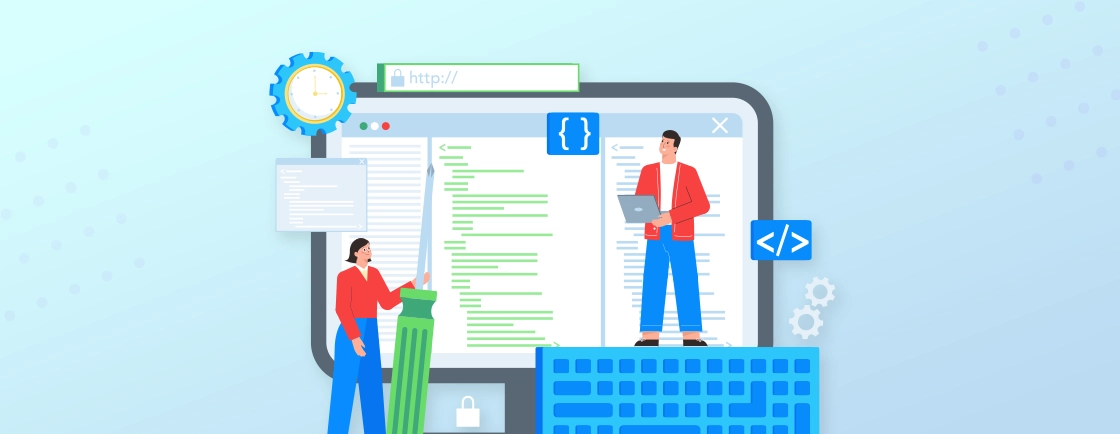Table of Contents
One of the major concerns for businesses is proper management of finance. Well-managed finance means regular cash flow, and regular cash-flow means undisturbed operations. However, most of the companies suffer because of the complexity of invoicing.
Activities such as tracking of overdue payments, management of records, or just ensuring all bills are correct eat out much time manually and may cause cash flow problems, customer dissatisfaction, and expensive mistakes.
All of this can be resolved with an Invoice system. It automates the complete process of invoicing, its accuracy, and keeps a check on payment collection for businesses. In this blog, we are going to talk about what an invoice system is, how it works, and the main advantages that come along when this system is implied within different types of businesses.
What is an Invoice System?
An invoice system is a web-based application that businesses use for creating and managing invoices. The invoice is basically a document to tell a customer about the amount that is owed on account of goods or services delivered. It involves key information about the item, price, taxes, and even payment terms.
The invoice system helps businesses keep track of who owes money and when they need to pay. All of this is done through digital software. Most modern businesses use digital billing systems because they save time and reduce mistakes.
Businesses need an invoice management system because it can quickly create invoices, send them to customers, and track when payments are made. It helps organize all financial records and makes sure that businesses get paid on time.
Key Features of an Invoice System
Automated invoicing software has many features that make the invoicing process easier and more efficient. Some key features you get with it are:
- Customizable Templates: These systems come with different invoice templates that you can personalize. You can add your company logo, choose colors, and adjust the layout to fit your brand.
- Automatic Calculations: The system automatically calculates totals, taxes, and discounts lowering the chances of mistakes in your invoices.
- Recurring Invoices: For businesses that have regular customers, automated software can set up recurring invoices. This means invoices are sent automatically on a schedule, saving time.
- Payment Tracking: The system tracks when a payment is received and updates the invoice status. You can easily see which invoices are paid and which are still pending.
- Online Payments: Many automated invoicing tools allow you to add payment links directly in the invoice. Customers can pay through secure online payment options, making it easier for them to pay quickly.
- Invoice Reminders: The system can send automatic reminders to customers when an invoice is overdue. This helps ensure you get paid on time.
- Report Generation: You can generate reports to see your sales, outstanding invoices, and financial health. These reports help with budgeting and planning.
- Cloud-Based Access: Most software stores your invoices in the cloud. This means you can access them from anywhere, on any device.
In short, an invoicing system helps with creation and management of invoices. Businesses have the option of sending customized invoices and payment reminders. It also makes payment tracking easy.
Types of Invoice Systems
There are a few different types of invoice systems available and each has its own features.
- Standalone Web Invoice Systems: These are simple, easy-to-use systems focused only on invoicing. They let you create and send invoices quickly, track payments, and sometimes manage expenses.
- Cloud Accounting Platforms: These systems offer more than just invoicing. They include features for managing expenses, payroll, taxes, and even inventory. They’re ideal for businesses that need more than basic invoicing.
- Freelancer and Small Business Solutions: These are designed for freelancers or small businesses that need simple, affordable invoicing. They often offer easy invoice creation, client management, and payment tracking.
- Integrated Payment Systems: Some invoicing software is directly linked to payment gateways. This means you can receive payments as soon as the invoice is sent.
Each of these systems can help you streamline your invoicing process. The right one for you depends on your business size and specific needs.
Benefits of Invoice Systems
Having an invoice system gives many benefits to businesses. It makes the process smooth. It:
- Saves Time: An invoice system automates many tasks, like creating invoices and sending reminders. This saves you hours of manual work.
- Reduces Errors: Automated calculations help prevent mistakes in adding up totals, taxes, and discounts. This ensures your invoices are accurate.
- Improves Cash Flow: With automatic reminders and easy payment options, you’re more likely to get paid on time. This helps keep your cash flow steady.
- Keeps Everything Organized: An invoice system stores all your invoices in one place. You can easily find past invoices and track your financial history.
- Gives a Professional Appearance: Invoices created through an automated system look clean and professional. This helps build trust with customers.
- Easy Access: With cloud-based systems, you can access your invoices from anywhere, anytime, on any device.
- Makes Payments Faster: Some invoice systems allow you to include online payment links in your invoices. This makes it easier for customers to pay quickly.
- Improves Reporting: Invoice systems generate reports on your sales, outstanding invoices, and payments. This gives you a clear picture of your business’s financial health.
- Cost-Effective: While there’s a small cost to using an invoice system, it’s cheaper than doing everything manually. It can help you avoid mistakes that might lead to financial losses.
By using an invoice system, you can make your invoicing process faster, more accurate, and less stressful.
How Does an Invoice System Work?
An invoice system works by automating the process of creating, sending, and tracking invoices. The process is as follows:
- Create the Invoice: First, you enter the details of the sale or service, like the customer’s name, the items or services sold, and the price. The system will automatically calculate taxes, discounts, and totals for you. Also, you can customize the invoice with your business logo and information.
- Send the Invoice: Once the invoice is ready, you can send it directly to your customer. Most systems allow you to send invoices by email or through an online portal. Some systems can even send the invoice automatically once it’s created.
- Track the Payment: After sending the invoice, the system tracks when the customer has paid. It will mark the invoice as “paid” when the payment is received. If the payment is overdue, the system can send automated reminders to the customer.
- Store and Organize: All your invoices are saved in the system. You can easily find any past invoices if needed and keep your financial records organized. The system can also generate reports on unpaid invoices, total sales, and other financial details.
- Follow Up: If an invoice isn’t paid on time, the system can automatically send follow-up reminders. This helps make sure you get paid quickly.
In short, an invoice system makes the whole invoicing process easier by handling most of the work for you, from creating invoices to tracking payments and regular follow-ups.
Closing Words
An invoice system is a useful tool for modern businesses. It makes the invoicing process easy, helps businesses get paid faster, and ensures accurate record-keeping. Having an invoice system in place improves cash flow and makes tracking payments easy.
As businesses grow, investing in a modern and advanced invoice system can lead to significant improvements in financial management.
If you’re looking for an efficient invoice system that’s easy to use, check out our solution demo.
FAQs on Invoice System
What is the purpose of an invoice system?
An invoice system helps businesses create, send, and track invoices automatically. It makes the invoicing process faster, more accurate, and organized.
Can I use an invoice system if I’m a small business owner?
Yes, many invoice systems are designed for small businesses. They are easy to use, affordable, and help manage invoicing efficiently.
How does an invoice system help with late payments?
An invoice system can automatically send reminders to customers when their payment is overdue, helping you get paid on time.
Explore Our Expert Guides
Dive into detailed tutorials, tips, and strategies designed to help you grow, innovate, and solve problems efficiently.





